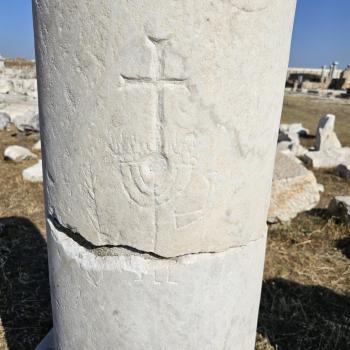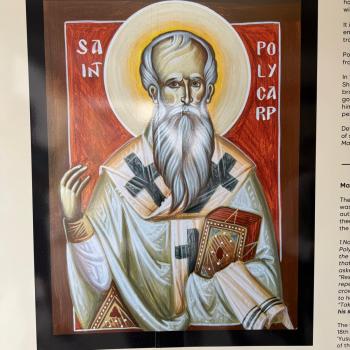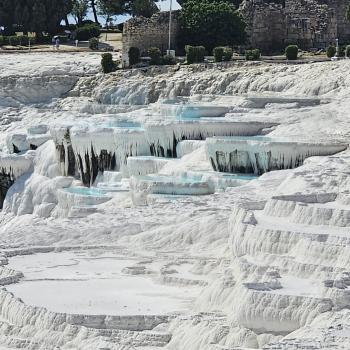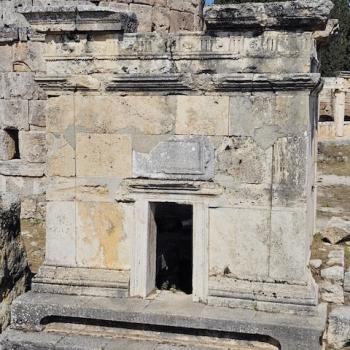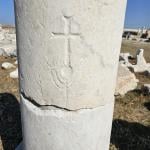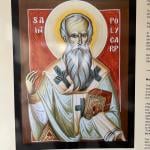 On the road in Turkey one sees many interesting things if you keep your eyes open, including storks feeding their babies on the top of electrical poles. But something that is never evident to the naked eye above ground is the evidence for underground Christianity in Turkey. And there is plenty of evidence. In blogs from last summer (see my blogs at Beliefnet) I talked about the underground cities in Capadoccia but this is not the only place they are found. In fact there is one at the small village of Aydin Tepe not far from Trabzon. So let’s start with a little map to show you where I mean.
On the road in Turkey one sees many interesting things if you keep your eyes open, including storks feeding their babies on the top of electrical poles. But something that is never evident to the naked eye above ground is the evidence for underground Christianity in Turkey. And there is plenty of evidence. In blogs from last summer (see my blogs at Beliefnet) I talked about the underground cities in Capadoccia but this is not the only place they are found. In fact there is one at the small village of Aydin Tepe not far from Trabzon. So let’s start with a little map to show you where I mean.
 If you look carefully at the map to the left you will see Aydin Tepe situated about an hour and a bit South from Trabzon and the Black Sea.
If you look carefully at the map to the left you will see Aydin Tepe situated about an hour and a bit South from Trabzon and the Black Sea.
 Here is the sign next to the back entrance to the underground city.
Here is the sign next to the back entrance to the underground city.
And below you will see the back entrance to this underground city, which is beautifully maintained by the residents of the little town, and well lit. This particular underground city reflects the persecution of Christians in the second and particularly in the third century A.D. (the famous Decian and Diocletian persecutions. No doubt the cities got bigger the more persecution transpired. What is not completely clear is whether we should see these places as permanent residencies or as cities of refuge or as sanctuaries from which people came and went, came during hard times, and left thereafter. What we do find in these underground cities is a source of water, storage facilities for food and meeting rooms as well as living quarters. Think of them as like the old tornado bunkers or nuclear bunkers in America.


 Note the rolling stone used to seal the entrances. There is one at both ends of this city, which wanders under the modern city for about two miles. It took Mark Fairchild and I a while to wander through it, always ducking as the ancients were short people compared to modern Americans. My friend Mark Fairchild from Huntington shows below just how much a 6 foot tall person has to stoop to avoid knocking one’s noggin in this underground city.
Note the rolling stone used to seal the entrances. There is one at both ends of this city, which wanders under the modern city for about two miles. It took Mark Fairchild and I a while to wander through it, always ducking as the ancients were short people compared to modern Americans. My friend Mark Fairchild from Huntington shows below just how much a 6 foot tall person has to stoop to avoid knocking one’s noggin in this underground city.
Here we see water jars in the shot below, because even though there is water running seeping through the roof of this underground city, it needed to be collected and stored for a variety of uses by the Christians dwelling there. They could not survive long without water. The evidence for Christianity in Turkey is everywhere present— in the east, in the middle in the West, north by the Black Sea south by Antalya and even underground if you know where to look. And the evidence shows a continued Christian presence from the first century all the way to the present, though today Christians make up a tiny minority in Turkey and they are not allowed to have their own seminaries to train their own clergy. But if there is one thing one can learn from studying Christians in the first three centuries of this era, it is that while you can drive Christians underground, it is difficult to stop the power of the Gospel and its spread even with persecution or legislation or politics. The new wine even in old vessels never runs dry, and indeed never ceases to quench a human thirst like no other thirst quencher on earth. Or, to use another metaphor, the stork is always an emblem of new life, and it became an emblem for new human life including new Christian life. Like the stork in the picture above, new life springs forth in unexpected places— you have to lift up your eyes, or look underground to find it sometimes.







